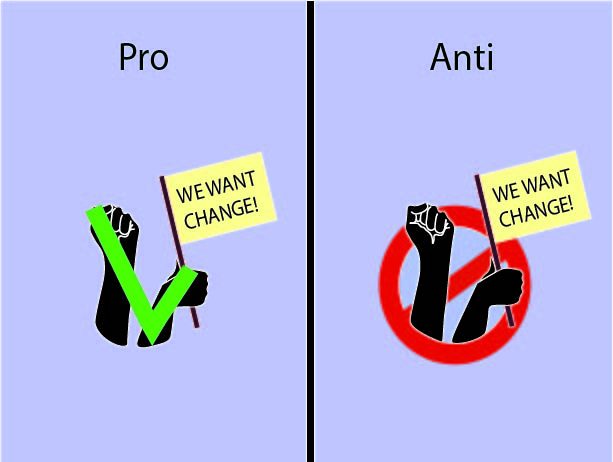Worth it
At a predetermined time during the school day, students leave class at the same time to gather outside in solidarity against a major issue. The purpose of a walkout is to unify student voices3 and call attention to an important topic. While some may argue that walkouts bring no real change, the true value of walkouts lies in bringing student voices together and demonstrating visible resistance to oppressors.
Walkouts involve physical action. Clicking a button on a social media post takes little effort, while the close proximity and courage that walkouts require result in a visible display of protest and promote further change and action. Walkouts bring people who lack knowledge about the issue near others with more knowledge or direct experience. While they may appear simple on the surface, walkouts are filled with symbolic meaning. Although schools are normally considered safe havens that protect students from the dangers of the outside world, they are not meant to completely isolate them from real life. Students should exercise their right to assemble if and when change becomes necessary, and sacrificing time from their education is a small price to pay. After all, while skipping class is an issue, the bystander effect turns the refusal to walk out into a choice of siding with the oppressor, rather than maintaining neutrality.
While students may sometimes feel like their voices aren’t heard or that their individual actions have no effect on the “real world,” walkouts are evidence that together, people can make a difference. Problems may seem too big for students to tackle, but events such as the national anti-gun violence walkout in 2018 prove that protests at high schools can spread awareness nationwide. Over 3,100 schools, including Inglemoor, participated in the walkout, each dedicating 17 minutes to commemorate the 17 students murdered in Parkland. The walkout started from the #NeverAgain movement, which was created by a few students from Marjory Stoneman Douglas High School, where the tragedy took place. Shortly after the walkout, Florida passed a law increasing the minimum age to buy firearms up to 21 and established a system for police to seize firearms from anyone considered a threat. While Florida is historically pro-gun, the millions of dollars it invested into schools for safety and mental health purposes shows that walkouts really can create change.
Walkouts not only inspire action but also change student mindsets. Armed with new knowledge and mass unity, students know they are not alone in their quest for change. Since most high school students are under the voting age, walkouts allow students to address issues they normally don’t get a say in. While students who participate in walkouts lose some time in the classroom, they gain something much more valuable: a sense of involvement in society, the ability to create change and the opportunity for real-life lessons.
Waste of time
In 1968, 22,000 mostly Mexican American East LA students walked out of their classes to protest the racially-biased education inequality enforced in their schools. Following in their footsteps are generations of activists who, similar to them, are hoping to enact positive change. However, although school walkouts are meant to be beneficial, there are students who attend them simply to skip class, not because they support the cause. Walkouts often don’t have deep or substantial impacts that reach beyond spreading awareness. Without providing sustainable solutions, walkouts are only effective in gaining attention instead of enacting real change.
Walkouts are meant to bring students together for a common cause, but in some cases, ralliers only attend because they’d rather not sit in class. Regardless of the intention, students who miss class for a walkout still risk falling behind on their work. College students in particular pay large fees to enroll and take classes. Missing these courses can feel like a waste of money and may be difficult to make up.
Some may argue that advocating for an important issue is worth skipping class, but the conflicts that students walk out for are often too complicated for a school walkout to resolve. Usually, walkouts are only effective for problems that school administrations have some control over. Public high school boards typically don’t have the funds to advocate or donate to causes such as wars, laws, or impoverished groups. Recently, the Muslim Student Association, South Asian Student Association and Black Student Union organized a walkout demanding a ceasefire for the Israel-Hamas conflict. While their goal to raise awareness of the Israel-Hamas war was genuine and more or less successful as it resulted in a decent turnout, there is still virtually nothing Inglemoor as an individual school can do to help enact a ceasefire in an international conflict. Similarly, the national issue of gun violence triggered a widespread reaction of walkouts all over the nation, yet the problem has not been solved and continues to be the leading cause of death for children in the United States.
In terms of promoting a walkout, social media is often an effective tool that can be used to recruit supporters. Apps such as Instagram, Tiktok and Snapchat tend to spread information like wildfire even when the facts are false. Many teenagers believe whatever disinformation appears on their feeds. Instead, students should take the time to research credible sources in order to form their own well-educated opinions. School walkouts often attract superficial followers with little to no knowledge of the issue in question who feel that it’s easiest to agree with what the majority believes rather than forming their own beliefs. Before attending a walkout, students must conduct their own research to ensure they are positively contributing to the purpose of the walkout. If the walkout will bring no real solutions, teens should ask themselves if it is worth participating in at all.











